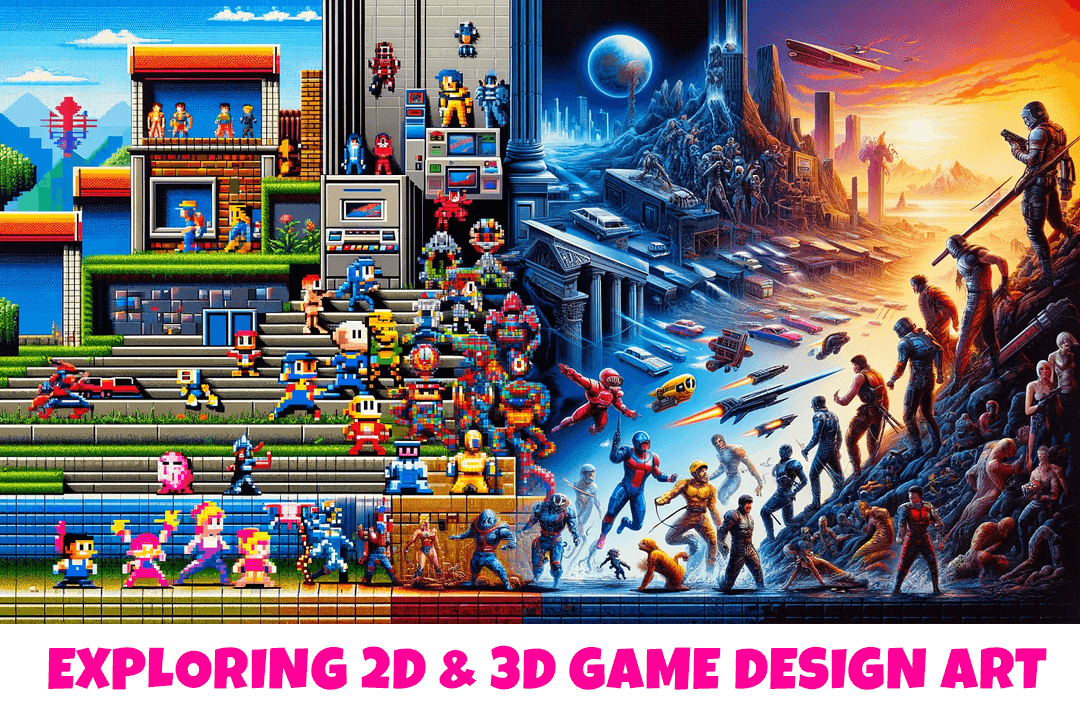
The world of game design is constantly pushing boundaries, and one particularly captivating trend is the melding of 2D and 3D art styles. This unique approach can create visually stunning and engaging experiences, but achieving a cohesive world requires careful planning and execution.
Using the key ingredients for a successful blend:
It all starts with a strong central theme that dictates the overall aesthetic. Whether it's a whimsical hand-drawn world punctuated by 3D characters with soft lighting and pastel colors, or a gritty cyberpunk environment with 2D UI elements that utilize a neon color palette and harsh shadows, ensure both styles complement each other and contribute to the narrative you're trying to tell.
Maintaining a consistent color scheme and lighting approach across your 2D and 3D assets is crucial for achieving a cohesive world. Here are some additional tips:
Limited Color Palettes: Consider using a limited color palette with shared tones across 2D and 3D elements. This creates a sense of unity while allowing for subtle variations within each style.
Lighting as a Unifying Force: How light interacts with your world should be consistent, regardless of whether it's a 2D background or a 3D character. For instance, if the primary light source in your scene is the sun, ensure both 2D and 3D elements cast shadows in the same direction.
Careful consideration needs to be given to perspective and scale when integrating 2D and 3D elements. Here's how to ensure a natural look:
Establish a Ground Rule: Decide on a clear perspective for your world, such as isometric or side-scroller, and ensure 3D objects adhere to that perspective when placed within 2D environments.
Size Matters: The size of 2D elements and 3D objects should feel natural relative to each other. A common mistake is creating 3D characters that are too large or small compared to the scale of the 2D world.
Seamless transitions between 2D and 3D elements are crucial for a cohesive experience. Utilize clever animation techniques to create a smooth flow, such as:
Parallax Scrolling: This technique creates depth by moving background layers at different speeds than foreground elements. It can be particularly effective when transitioning between 2D backgrounds and 3D characters.
Perspective Shifts: As the camera moves within the game world, the perspective can subtly shift to create a more natural flow between 2D and 3D elements.
Play to the strengths of both 2D and 3D art forms to create a richer visual experience:
2D for Expression and Detail: 2D art excels at creating expressive characters, detailed backgrounds, and unique visual effects that can add depth and personality to the game world.
3D for Depth and Dynamism: 3D art shines in depicting dynamic characters, realistic environments, and objects that can be interacted with naturally.
Integrating 2D and 3D art styles within a game world can be a powerful tool for creating a unique and engaging experience. By carefully considering artistic vision and meticulous attention to detail, developers can achieve a blended art style game design that feels cohesive and enhances the overall narrative and atmosphere. This approach pushes the boundaries of visual storytelling, offering players a fresh perspective and a world that stands out in the crowded digital entertainment landscape.
The potential for innovative integration of 2D and 3D art forms is constantly evolving, promising even more exciting possibilities for the future of game design. So, the next time you're crafting a game world, consider the possibilities of a blended art style to create a truly immersive and unforgettable experience for your players.